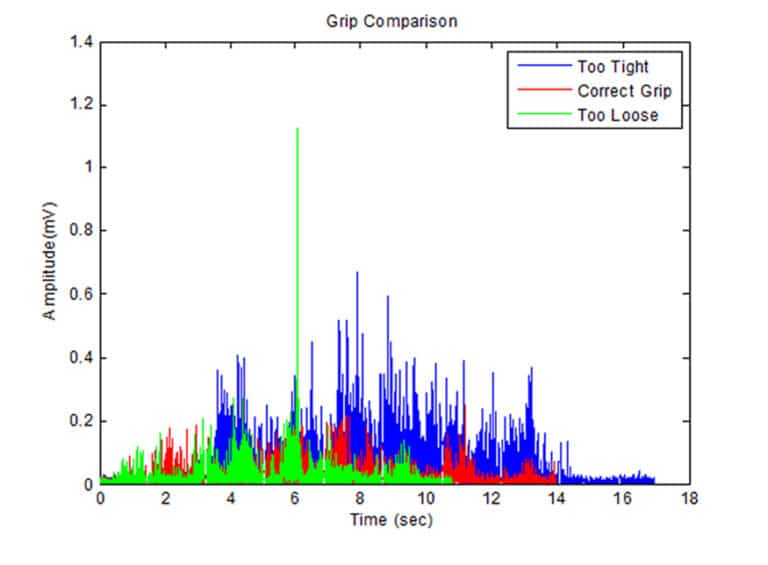Aoife Marsh, a student of ME in Electrical Engineering of University College Dublin, recently developed a Shimmer based application to evaluate potential impact of sensor training systems on professional golf coaching.
Background & Objectives

System Development
1. Signal Analysis and Sensor Positioning
Focus on data collection, data fusion, sensor positioning, signal analysis using Welch’s method and power spectral density analysis – amongst others.
2. Signal Processing
Noise reduction through filtering, identification and extraction of key features using Dynamic Time Warping.
3. Machine Learning
Feature classification using Linear Discriminate Analysis.
4. Analysis of Results and Further Algorithm Development
Creation of thresholds for incorrect grip pressure, calculation of error rates for classification of features, improvements to feature extraction and data fusion algorithms.
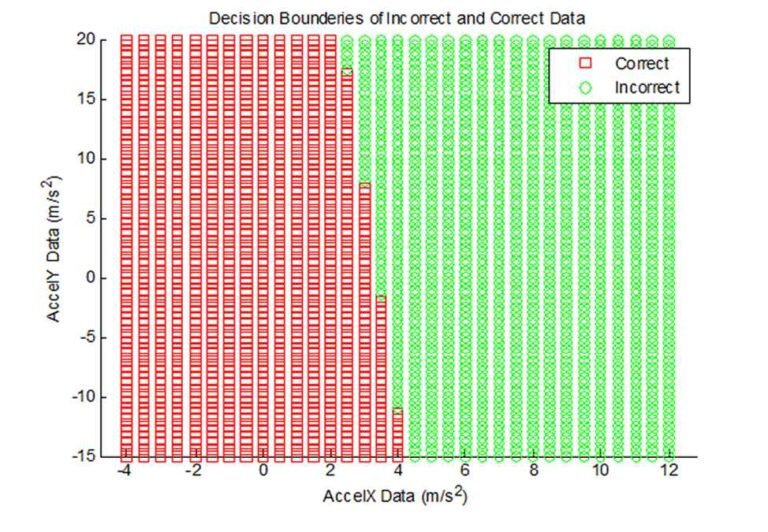
Integrating Shimmer
For this application it was essential to record movement and Electromyography (EMG) data from multiple critical sources on the body simultaneously in order to identify all key features of a golf swing. Shimmer’s Multi-Shimmer Sync software created a simple solution for this, which significantly increased the rate of development. Its built-in signal-processing feature noticeably reduced the amount of post-capture filtering on the acquired data.
In addition to the above, it was noted that the Shimmer sensor units and their compatibility with MATLAB through the Shimmer MATLAB Instrument Driver allowed rapid data processing and integration. In this instance the data was saved in CSV format, which via an included verified .m script allowed for easy loading of data directly into Matlab. A program was also written to automatically import the data into MATLAB, where the signals were further filtered and processed.
Both EMG and accelerometer sensors were necessary to detect a number of features of a swing. As both sensors were contained in a single Shimmer device, the number of sensors the user needed to attach was minimised. Shimmer’s lightweight nature meant the users natural movements were not impeded in any way by the sensors.
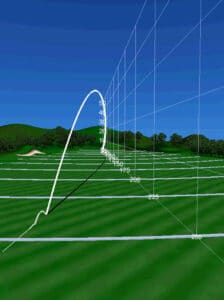
System Evaluation and Testing
A number of novel techniques were established and analysed to determine their effectiveness of a sensor-based training system. The most notable of these was an algorithm that calculated the approximate displacement and velocity of the sensors using integration techniques. From the results, the transfer of kinetic energy from the torso to the club head during a shot was quantifiable. From this, the double-pendulum system that is commonly used to model a golf swing was proven accurate.
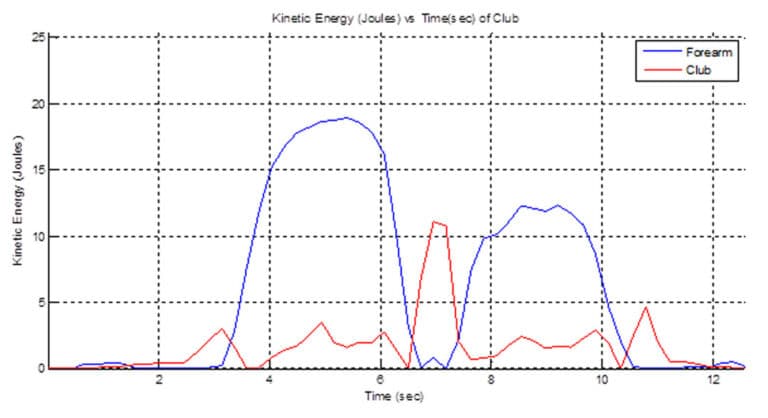
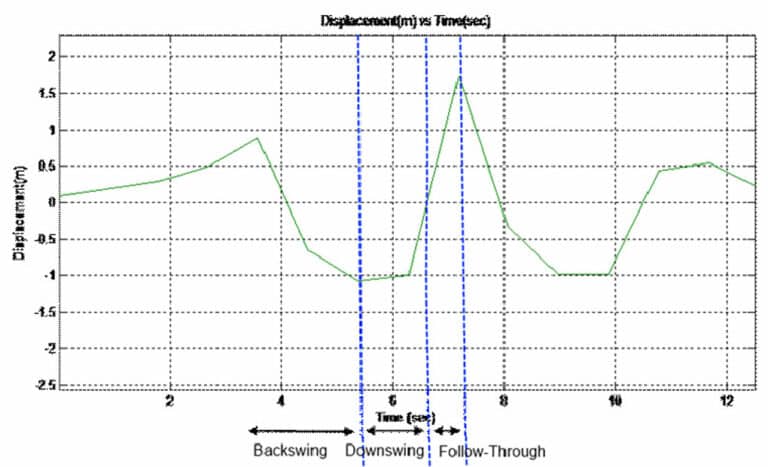
Conclusions and Future Research
The signals were filtered, and the key features of a shot identified using Dynamic Time Warping. A number of classification models were developed using Linear Discriminate Analysis from which specific errors in the swing could be identified. The error rate was significantly reduced by taking advantage of data fusion techniques, which reduced it to approximately 9.69%.
A number of threshold values were presented for use with the EMG sensors in order to detect incorrect grip pressure. This involved analysis of the standard deviation of the signal throughout the shot, as well as the amplitude of the signal itself.
The complicated technique of golf requires years of muscle conditioning before a high standard can be reached. In the past this was reached with the guidance of a professional sports coach. However, advances in technology and the demand for a quicker learning curve have led to the development of professional training systems.
A comprehensive algorithm was developed which forms the foundation of a training system. In the future this could be used as a basis for a system that incorporates more athlete data or can be used in a mobile coaching scenario.
